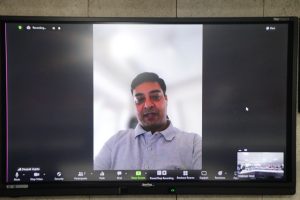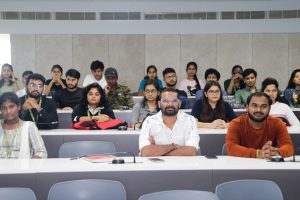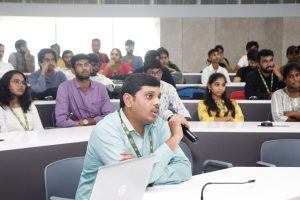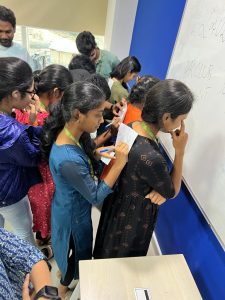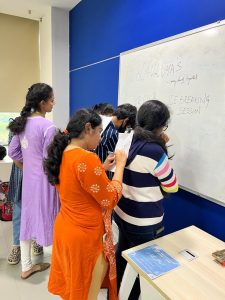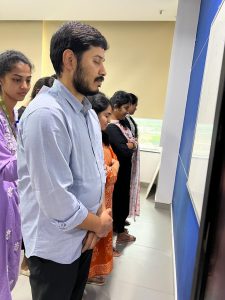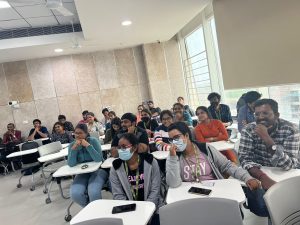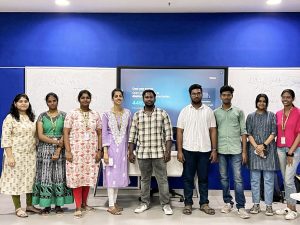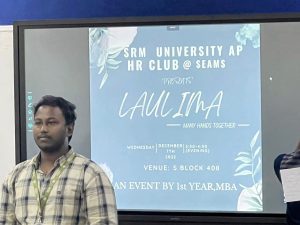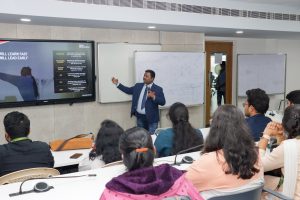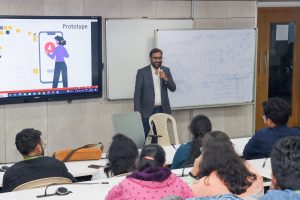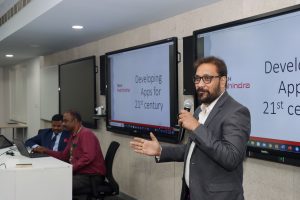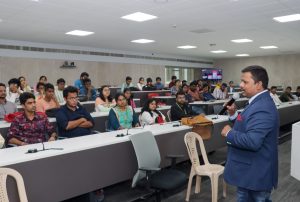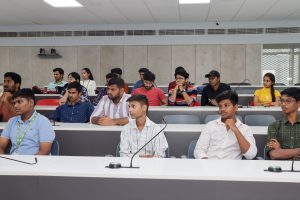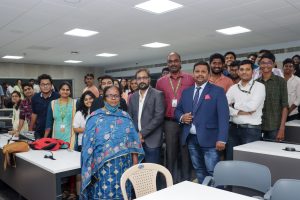All Management Events
- A Critical Analysis of Faith-based Healing December 26, 2022
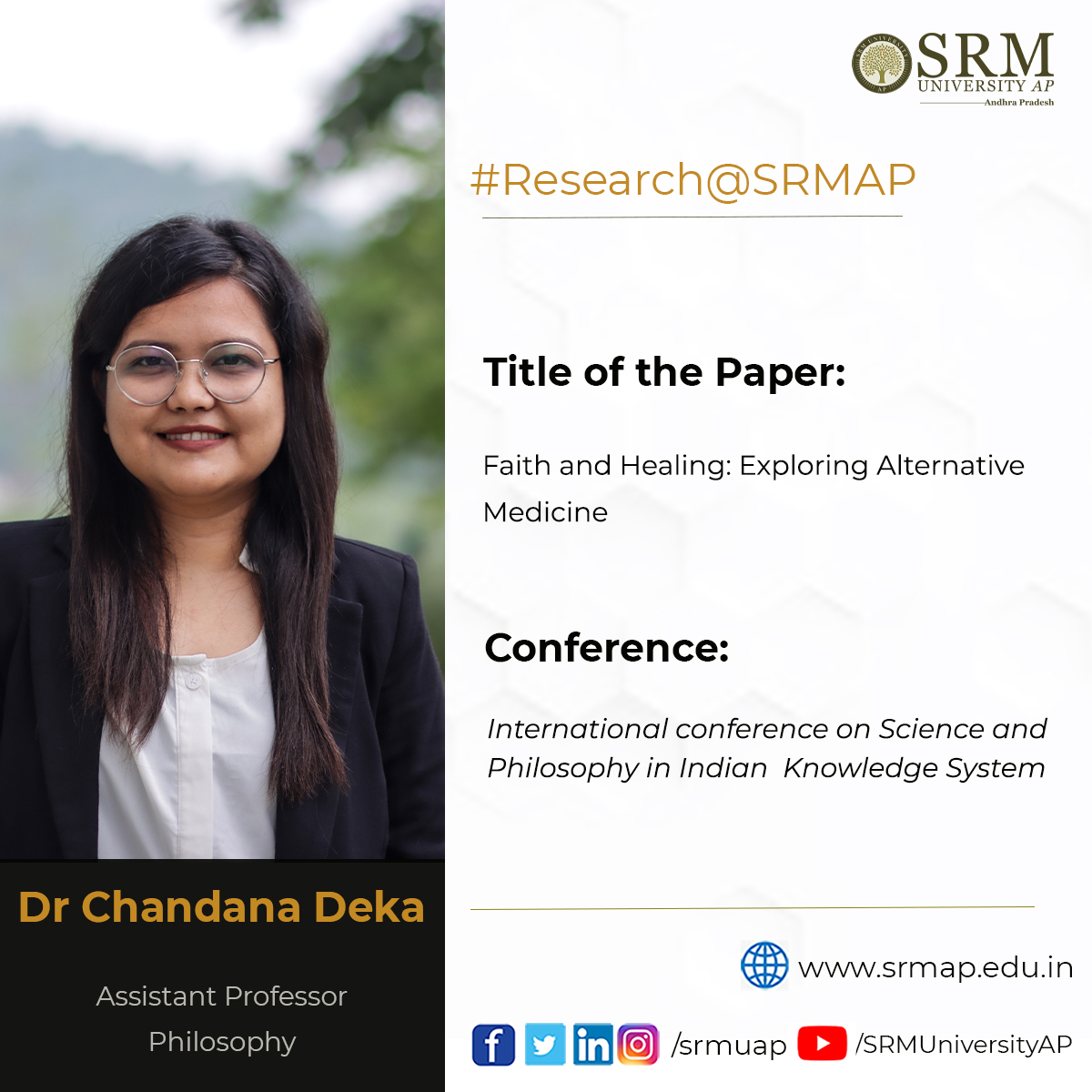 Dr Chandana Deka from the Department of Liberal Arts presented a paper titled Faith and Healing: Exploring Alternative Medicine at the international conference on Science and Philosophy in Indian Knowledge System organised by the Institute for Science and Spirituality Delhi in partnership with Noida International University IKS Division, Ministry of Education, Govt. of India from December 17 to 18, 2022. Her paper has also been published as part of conference proceedings.
Dr Chandana Deka from the Department of Liberal Arts presented a paper titled Faith and Healing: Exploring Alternative Medicine at the international conference on Science and Philosophy in Indian Knowledge System organised by the Institute for Science and Spirituality Delhi in partnership with Noida International University IKS Division, Ministry of Education, Govt. of India from December 17 to 18, 2022. Her paper has also been published as part of conference proceedings.Abstract
Fideism is a school of thought that gives importance to faith as against reason in matters related to religion. Fideism is defined as “the view that religious belief systems are not subject to rational evaluation” (Peterson, 2003). But matters related to religion do not confine only to the transcendental aspects of religion, it also impacts and influences the socio-cultural and ethical aspects (Durkheim, 1912). In this paper, the researcher discusses one such socio-cultural aspect of religious faith, that is, religious healing. Faith-based healing is often considered one form of alternative medicine (Andrew Village, 2005). In this paper, she explores this faith-based healing and contends that not all forms of faith-based healing can be appropriated. She tries to give a theoretical justification as to which forms of faith-based healing can be adopted and which need not be. The research is analytical and critical in nature based on materials that include books and articles written on fideism and different religious Texts.
Continue reading → - CXO Eminent Speakers’ Series: Mr Deepak Gupta on Global Business Scenarios December 26, 2022
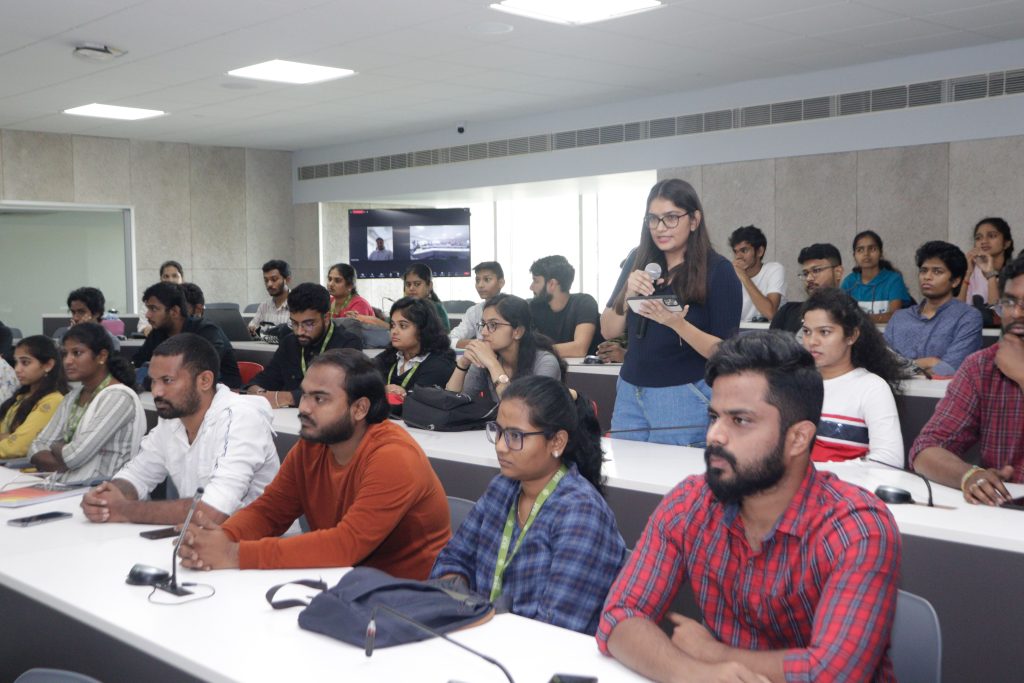
Under the ambit of the CXO Eminent Speakers’ Series, Paari School of Business organised the first virtual guest session on December 13, 2022. Mr Deepak Gupta, Country Head, Zotac Limited, Mumbai, a leading gaming enterprise, addressed the students of BBA and MBA programmes. The theme of his talk was “Global Business Scenarios: Q & A”. Given the unprecedented global changes and business transformation, Mr Gupta shared insights about how businesses are increasingly coping with emerging technological changes and innovations. From disruptive supply chain to strategic human capability, from consumer insights to finance and investing to digital leadership fronts, all demanding significant attention, and advancements for growth and sustainability for the planet, people, and profit. The session was well received by the students and faculty members.
Continue reading → - HR Club-Laulima organises “A Welcome to the Freshers” December 26, 2022
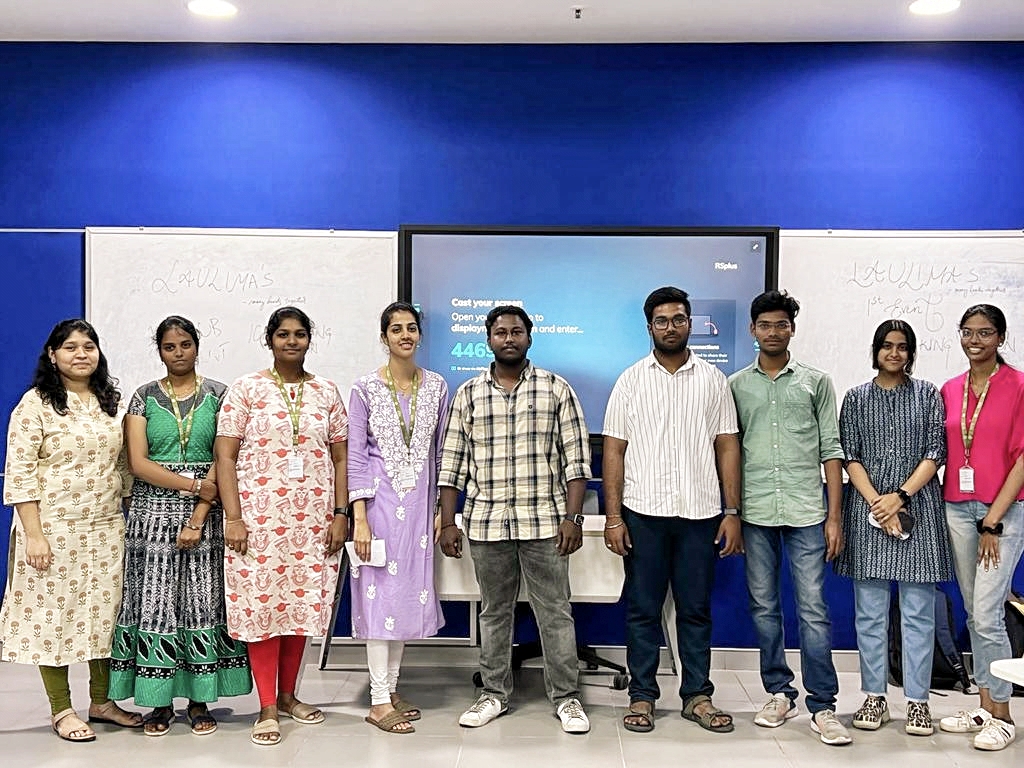
The Paari School of Business is an inclusive academic community that embraces modern perceptions while embracing the originality of past notions. To welcome the new recruits into the management abode, the HR Club – Laulima organised their maiden event “Ice-breaking session: Getting to know each other” on December 07, 2022 at the New Academic Block of the university. The student coordinators of BBA and MBA, with the support and guidance of faculty members, jointly organised the event for the participants from the first-year MBA students.
The Ice-breaking session featured games and activities which enabled participants to mingle with each other for the first time. It helped them build rapport with their batch-mates and was very well received by all participants. Moreover, it was an excellent opportunity for the student coordinators to learn and organise such an event with successful execution. The student coordinators also thanked the faculty members, HODs, and the respected Dean of Paari School of Business, Prof. Bharadhwaj Sivakumaran for their constant support and motivation to take the initiative and believe in ‘learning by doing’.
Continue reading → - SRM University-AP Walks Off with the Prestigious Accolade December 22, 2022
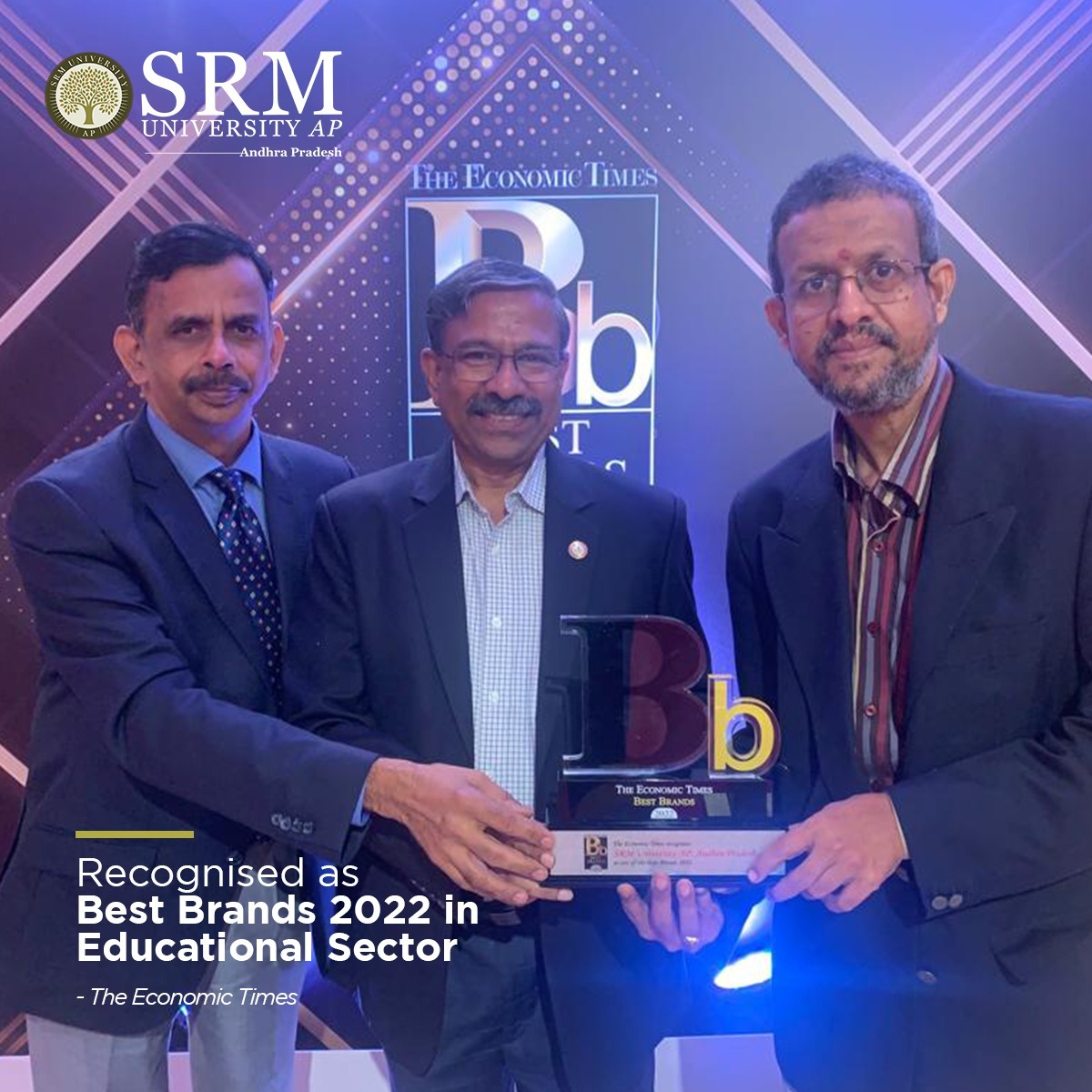 SRM University-AP has been bestowed with the prestigious Best Brand Award 2022 at the fifth edition of The Economic Times Best Brands Conclave held on December 20, 2022, at Taj Lands End, Mumbai. Mr Harsh C Mariwala, Chairman of Marico, handed over the award to Dr R Premkumar, Registrar; Prof. Bharadhwaj Sivakumaran, Dean, Paari School of Business; and Mr Pankaj Belwariar, Director, Communications, of SRM AP. The award is conferred to brands that have transformed their present structure, conditioned the future course of action, and delivered value to all their customers by constantly innovating.
SRM University-AP has been bestowed with the prestigious Best Brand Award 2022 at the fifth edition of The Economic Times Best Brands Conclave held on December 20, 2022, at Taj Lands End, Mumbai. Mr Harsh C Mariwala, Chairman of Marico, handed over the award to Dr R Premkumar, Registrar; Prof. Bharadhwaj Sivakumaran, Dean, Paari School of Business; and Mr Pankaj Belwariar, Director, Communications, of SRM AP. The award is conferred to brands that have transformed their present structure, conditioned the future course of action, and delivered value to all their customers by constantly innovating.“SRM University-AP has established a solid brand value within a short span of time in the education industry. Best Brand Award 2022 is a huge honour for the institution, and we will strive to enrich and uphold this recognition for years to come,” said Prof. Manoj K Arora, Vice Chancellor, SRM AP, as he expressed his thoughts on being at the receiving end of the esteemed award.To recognise leading Brands for the financial year 2021-2022, Economic Times researched the parameters laid down by the Knowledge Partner, which included brand value, years of existence, annual turnover, minimum growth rate, brand recall value, and the number of employees among other notable achievements, according to which the brands were evaluated and chosen. SRM University-AP has been shortlisted as one of the Economic Times Best Brands of 2022 and was honoured with a certificate of appreciation. The glorious award ceremony featured remarkable brands which have redefined the benchmark in their respective fields through their legacy and sustainability in India and global markets.
Continue reading → - When Innovation meets Compassion: Dr Sunitha’s Noble Initiative December 21, 2022
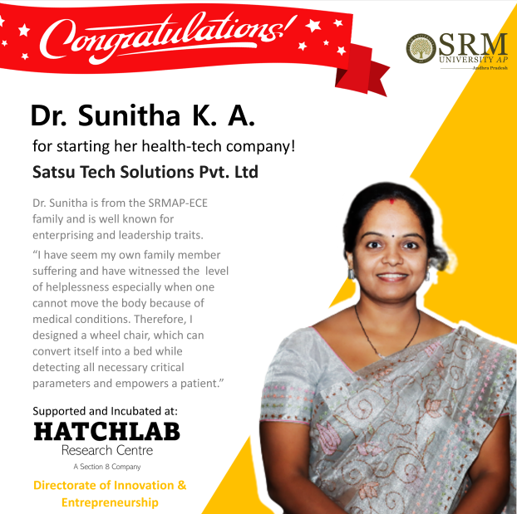
The Directorate of Entrepreneurship and Innovation steps forth with yet another brave initiative from Dr Sunitha K A, Associate Professor, the Department of Electronics and Communication Engineering. Dr Sunitha had envisioned a dream to empower patients suffering from ailments that require sustained medical assistance with a specially designed convertible wheelchair that can aid the patients in mobility and self-help. In association with Hatchlab Research Centre, Dr Sunitha has initiated a health-tech startup exclusively for patients who cannot move their bodies due to several medical conditions and to raise awareness of the continuing rise of similar cases in today’s society.
Dr Sunitha says, “The main challenge of the patient is to perform the basic movements like coming out of the bed and to sit in the wheelchair (and vice-versa), and it is almost impossible for a patient to do this simple act without external support of a person or a nurse. We have listed several such scenarios and cases where our specially designed wheelchair can be converted into a bed and can be easily controlled by the patient itself. Apart from that, all the necessary inputs like the urine levels in the drop-bag, pulse rate, emergency indicated, oxygen levels and several other parameters are well integrated into the system itself which displays in the dashboard and is communicated to the stakeholders.”
The prototype for the convertible wheelchair has been successfully tested and appreciated by doctors and experts in Chennai. With the help of Hatchlab Research Centre, the prime focus for the next few months is to create a completely functional prototype. The innovative venture plans to recreate the fully functional prototype, seed funding and round one funding from the investors, followed by large-scale production. Several multinational design patents for the product have already been filed by Dr Sunitha, and the next stage of the cohort is the commercialisation of the product.
Continue reading → - State of Play and Future of Atomic Clocks: Nobel Laureate Prof. David Wineland Joined EPIC-2022 December 21, 2022
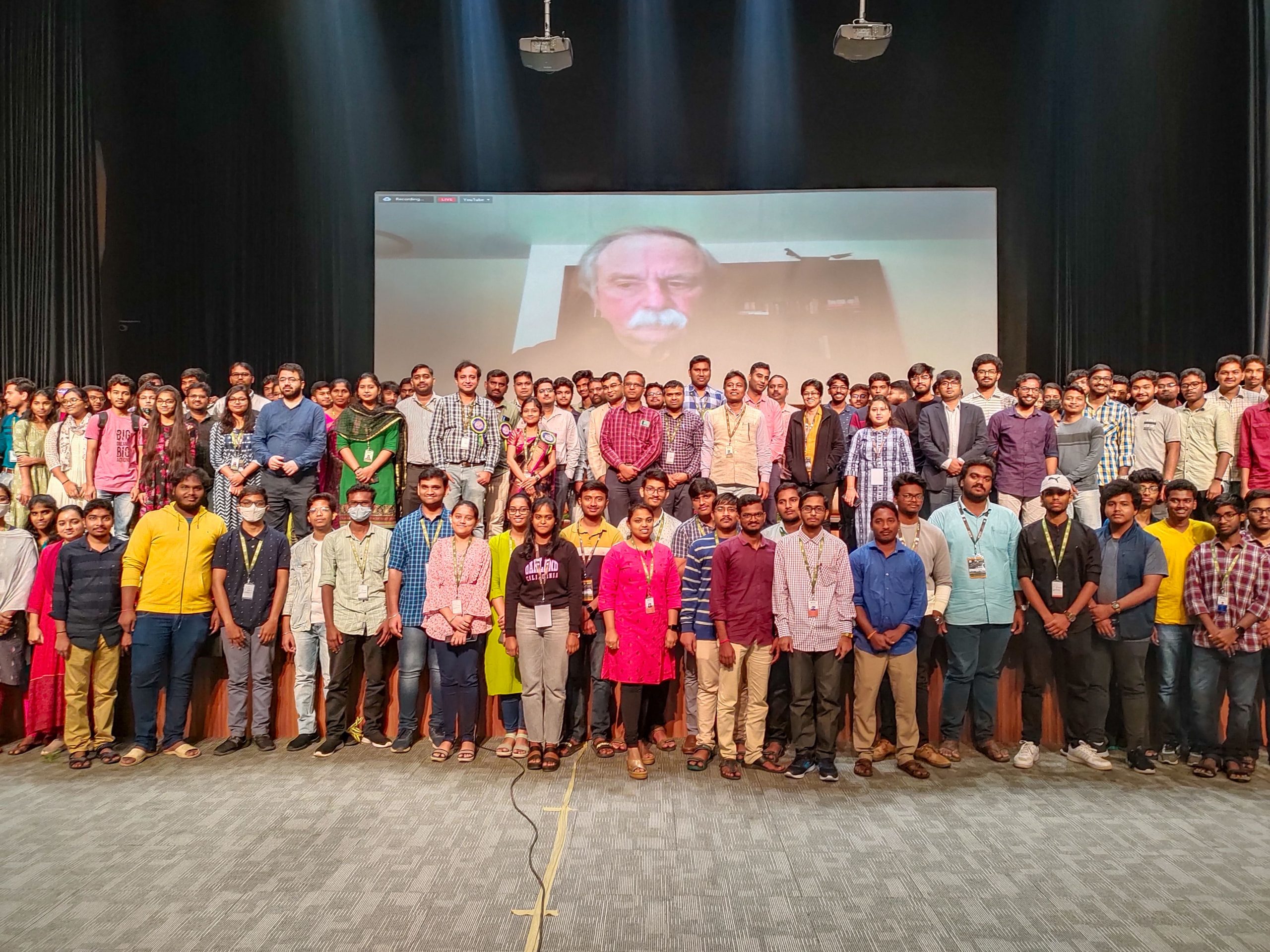 Nobel Laureate Prof. David Wineland, University of Oregon, USA, virtually joined the International Conference on Electronic and Photonic Integrated Circuits (EPIC- 2022) hosted by SRM University-AP from December 15 to 17, 2022. The American Physicist who was awarded the 2012 Nobel Prize in Physics for devising methods to study the quantum mechanical behaviour of individual ions delivered an insightful lecture on Atomic Clocks. The three-day-long conference organised by the Department of Electronics and Communication Engineering, SRM AP, concluded on Saturday, December 17, 2022; the Convenors of this event were Dr Pradyut Kumar Sanki and Dr Swagata Samanta.
Nobel Laureate Prof. David Wineland, University of Oregon, USA, virtually joined the International Conference on Electronic and Photonic Integrated Circuits (EPIC- 2022) hosted by SRM University-AP from December 15 to 17, 2022. The American Physicist who was awarded the 2012 Nobel Prize in Physics for devising methods to study the quantum mechanical behaviour of individual ions delivered an insightful lecture on Atomic Clocks. The three-day-long conference organised by the Department of Electronics and Communication Engineering, SRM AP, concluded on Saturday, December 17, 2022; the Convenors of this event were Dr Pradyut Kumar Sanki and Dr Swagata Samanta.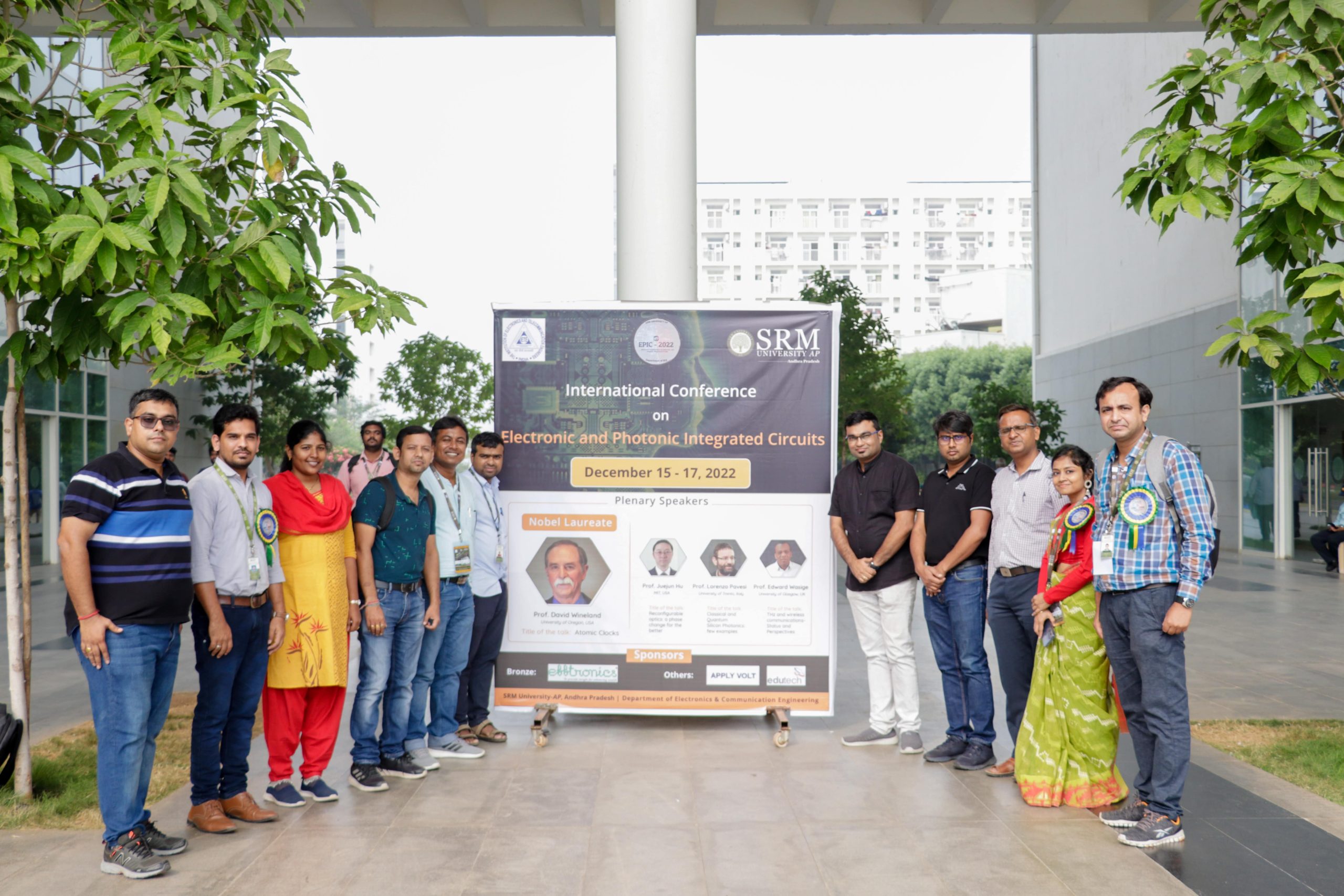 Nobel Laureate Prof. David Wineland elaborated on why the world needs precise clocks, the basics of how atomic clocks work, optical atomic clocks, the state of play and what the future might hold. Prof. Juejun Hu, Massachusetts Institute of Technology, USA; Prof. Edward Wasige, University of Glasgow, UK; and Prof. Lorenzo Pavesi, University of Trento, Italy were the Plenary speakers of this conference. Prof. Amlan Chakrabarti, Director, A. K. Choudhury School of Information Technology, University of Calcutta; Prof. Shankar Kumar Selvaraja, IISc Bangalore; Prof. Chetna Singhal, IIT Kharagpur; Prof. Naren Naik, IIT Kanpur; Prof. Samaresh Das, IIT Delhi; Prof. Shanti Bhattacharya, IIT Madras; Dr. Pranabendu Ganguly, IIT Kharagpur; Prof. Sarbani Ghosh, BITS Pilani; Dr. Bruno Romeiro, International Iberian Nanotechnology Laboratory, Portugal; Prof. Sakellaris Mailis, Skolkovo Institute of Science and Technology, Moscow, Russia; Prof. Shyamal Mondal, Defence Institute of Advanced Technology; Prof. Enakshi Bhattacharya, IIT Madras were the eminent speakers of the first two days. Prof. Achanta Venugopal, Director, NPL Delhi; Prof. T Srinivas, IISc Bangalore, and Prof. Ravindra Jha, IIT Guwahati, gave the keynote speeches on the last day of the programme. A session on ‘Women in Devices, Circuits & Systems’ was delivered by Prof. Sujata Pal, IIT Ropar; and Prof. Takako Hashimoto, Vice President of the Chiba University of Commerce (CUC), Japan; Industrial Talk by Dr Sajal Sarkar, Power Grid Corporation of India Ltd.; Dr. Pradipta Patra, Samsung Semiconductor India; Dr. Satyabrata Sarangi, Meta; Sunnyvale, California, USA; and Dr. Souvik Kundu, Intel Labs, USA, were the other highlights of the day.
Nobel Laureate Prof. David Wineland elaborated on why the world needs precise clocks, the basics of how atomic clocks work, optical atomic clocks, the state of play and what the future might hold. Prof. Juejun Hu, Massachusetts Institute of Technology, USA; Prof. Edward Wasige, University of Glasgow, UK; and Prof. Lorenzo Pavesi, University of Trento, Italy were the Plenary speakers of this conference. Prof. Amlan Chakrabarti, Director, A. K. Choudhury School of Information Technology, University of Calcutta; Prof. Shankar Kumar Selvaraja, IISc Bangalore; Prof. Chetna Singhal, IIT Kharagpur; Prof. Naren Naik, IIT Kanpur; Prof. Samaresh Das, IIT Delhi; Prof. Shanti Bhattacharya, IIT Madras; Dr. Pranabendu Ganguly, IIT Kharagpur; Prof. Sarbani Ghosh, BITS Pilani; Dr. Bruno Romeiro, International Iberian Nanotechnology Laboratory, Portugal; Prof. Sakellaris Mailis, Skolkovo Institute of Science and Technology, Moscow, Russia; Prof. Shyamal Mondal, Defence Institute of Advanced Technology; Prof. Enakshi Bhattacharya, IIT Madras were the eminent speakers of the first two days. Prof. Achanta Venugopal, Director, NPL Delhi; Prof. T Srinivas, IISc Bangalore, and Prof. Ravindra Jha, IIT Guwahati, gave the keynote speeches on the last day of the programme. A session on ‘Women in Devices, Circuits & Systems’ was delivered by Prof. Sujata Pal, IIT Ropar; and Prof. Takako Hashimoto, Vice President of the Chiba University of Commerce (CUC), Japan; Industrial Talk by Dr Sajal Sarkar, Power Grid Corporation of India Ltd.; Dr. Pradipta Patra, Samsung Semiconductor India; Dr. Satyabrata Sarangi, Meta; Sunnyvale, California, USA; and Dr. Souvik Kundu, Intel Labs, USA, were the other highlights of the day.Additionally, a Panel Discussion was handled by Dr Rajkumar Elagiri, Apex Semiconductor; Dr Kamal Das, IBM Research Lab; and Dr Soumya Maity, Dell Technologies. Furthermore, the Young Researcher Forum conducted as part of the conference featured renowned academicians such as Dr Biswabandhu Jana, MIT and Harvard Hospital, USA; Dr Bibhas Manna, TU Wien, Germany; Dr Ankita Jain, Queens University, Canada; Dr Subhrajit Mukherjee, Technion – Israel Institute of Technology, Israel; Dr Rajat Subhra Karmakar, National Taiwan University, Taiwan; Dr Surajit Bose, Leibniz University Hannover, Germany; Dr Akanksha Pathak, Emory University, School of Medicine, USA; Dr Debidas Kundu, Carleton University, Canada; and Mayur Kumar Chhipa, ISBAT University, Kampala, Uganda, East Africa.
A pre-conference event: Smart SRM Hackathon – 24 Hrs Circuit Design Contest was organised on December 14, 2022. Poster & technical exhibition called Jigyasa took place on the first day of the conference EPIC-2022.
Continue reading → - A Business Rendezvous with Tech Mahindra December 21, 2022
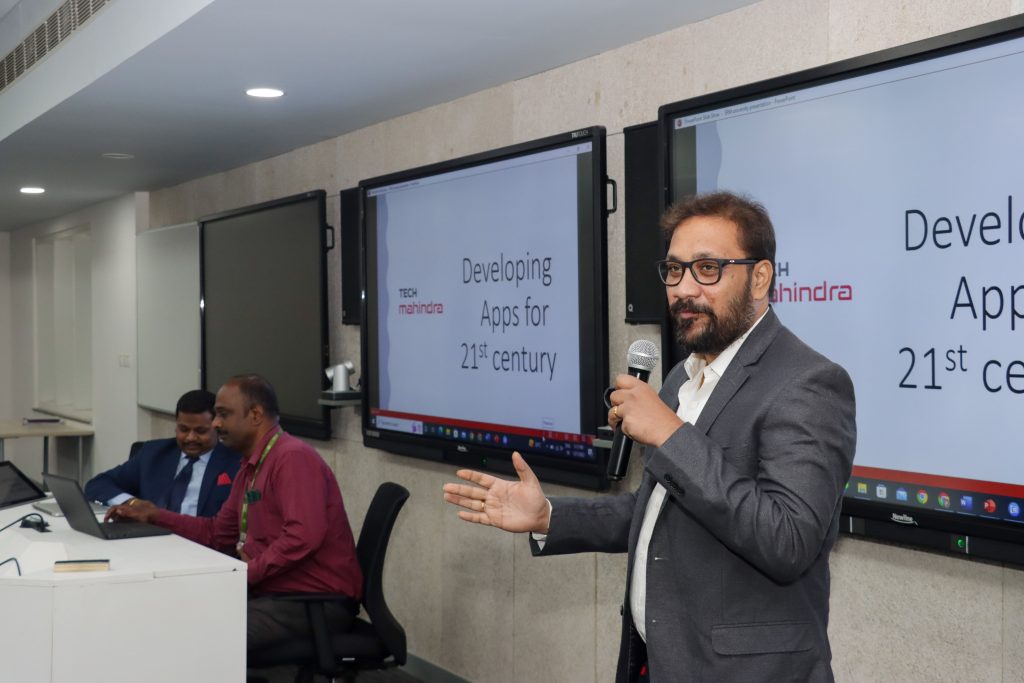
Paari School of Business upholds the importance of connecting business knowledge with hands-on market experience to develop competent candidates with refined managerial skills, ready to tackle the challenges of the business world. Their consistent approach to conducting industrial talks and research invites business giants from across the world to engage in insightful discourse with the students of management. The recent industry talk organised by the school invited a team from Tech Mahindra, the multinational information technology services and consulting company to provide exposure to practical compatibility of their knowledge to the requirements demanded by profession. The talk featured executives from the renowned enterprise addressing students on relevant trends and recent strategies in the market.
Mr Srinivas Reddy, Sr. Recruitment Manager and Vijayawada Location Leader, BFSI & Healthcare and Life Science’s Pan India Recruitment Leader held an engaging talk on the topic, “People Management Influence on IT Industry Business”. Mr Reddy highlighted how to connect with industry professionals and the influence of business networks in the IT business. He also discussed the importance of connecting business knowledge with the technical domain. Mr Kalyan Yelisetty, Manager – Product Development and Testing operations, also addressed the students in the evolving trends in the field of product development and testing in his lecture on “Developing products for the 21st century”. The Industry talk also threw light upon placement opportunities for business students.
The Industry talks and lectures aim at assisting students in aligning themselves with the latest requirements of the industry and sharpening their business acumen with expert discourses on pertinent topics related to the field. The Paari School of Business manifests this vision and upholds the need for bridging the gap between business management and technological advancements.
Continue reading → - Successful Food-Tech Venture hoists Jaswanth to Newer Heights! December 19, 2022
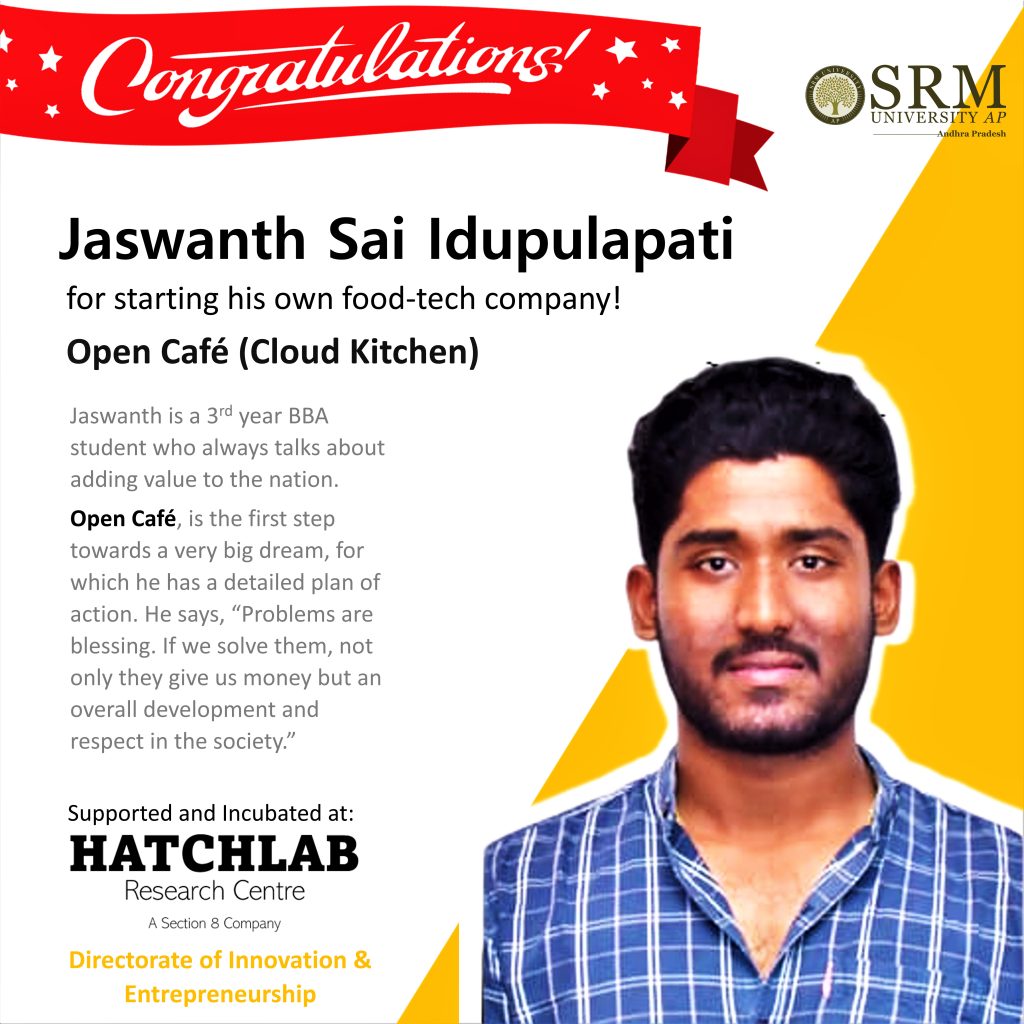
“The best way to predict the future is to create it”. Jaswanth Sai has proved to be a living and breathing manifestation of this quote with his determination and hard work. The Directorate of Entrepreneurship and Innovation is pleased to announce that Jaswanth Sai Idupulapati, a 3rd year BBA student, has successfully started his own food-tech company, Open Cafe, a cloud kitchen enterprise. Cloud kitchens are centralised, licensed commercial food production facilities where one to dozens of restaurants rent space to prepare delivery-optimised menu items. Jaswanth, an enthusiastic student of the Hatchlab Research Centre had started his business with an investment of Rs. 5000/- and today his turnover is more than 20L per month for a business that was started just three months ago!
“We invested Rs. 5000 and brought a van full of biriyani outside the main gate of our university. Hours passed and not a single sale happened. Those moments were not only depressing but also terribly demotivating. But as a leader, I had to rise up! We immediately changed the pricing strategy and shared the same via WhatsApp groups. In the next 45 minutes, we were left with empty vessels and a handful of cash. Profit was less; the learning and our confidence levels were mountain high,” Jaswanth excitedly mentioned about his first day of business.
As of now, Open Cafe caters to more than 1000+ students from SRM AP and VITAP, with quality food items that are delivered with a caption – 15 minutes delivery. Jaswanth has 15 employees and a big renovated kitchen, generating employment and thousands of satisfied customers.
His dedication and hardcore willpower allowed the materialisation of his idea into reality. Congratulations to Jaswanth Sai for his astonishing achievement!
Continue reading → - Dr Raviteja KVNS Received the Best Paper Award at TRACE 2022 December 16, 2022
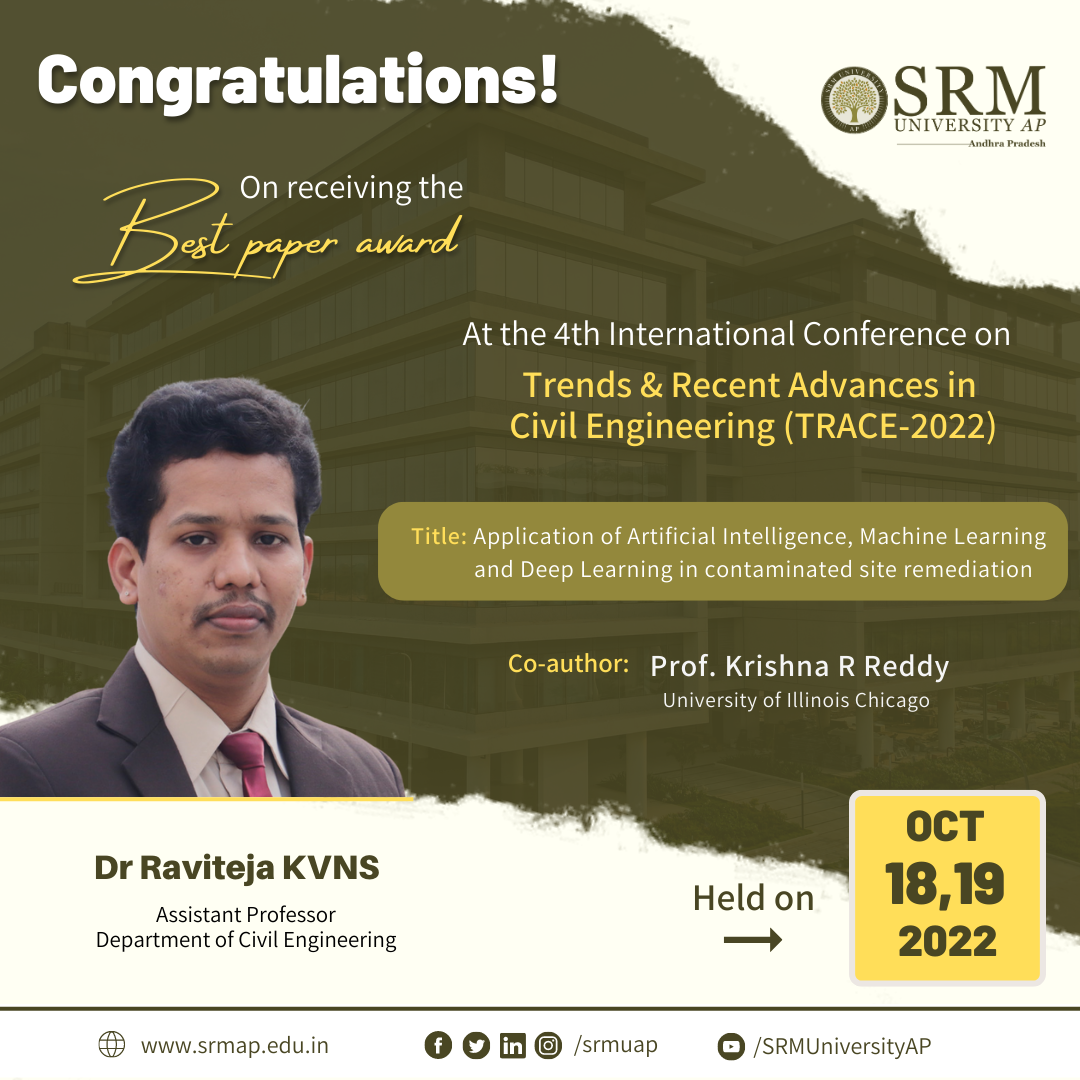 Soil and groundwater contamination is closely interlinked with human society because of its direct impact on population health and socioeconomic activities. The design and implementation of site remediation can be expensive, time-consuming, and may require much human effort. Emerging technologies such as Artificial Intelligence, Machine Learning, and Deep Learning have the potential to make site remediation cost-effective with reduced human effort.
Soil and groundwater contamination is closely interlinked with human society because of its direct impact on population health and socioeconomic activities. The design and implementation of site remediation can be expensive, time-consuming, and may require much human effort. Emerging technologies such as Artificial Intelligence, Machine Learning, and Deep Learning have the potential to make site remediation cost-effective with reduced human effort.Assistant Professor Dr Raviteja KVNS, Department of Civil Engineering, has received the Best Paper Award at the Fourth International Conference on Trends and Recent Advances in Civil Engineering (TRACE) 2022 for his paper Application of artificial intelligence, machine learning and deep learning in contaminated site remediation. The conference was held at Amity University, Uttar Pradesh, on October 18 and 19, 2022. His research reports the applications of AI and ML in contaminated site remediation.
Dr Raviteja’s future research plan includes studying potential applications of various AI, ML and DL techniques for Geotechnical and Geo-environmental design and testing applications so as to reduce the labours of physical and repetitive testing and associated human effort. This further improves precision as well as aids in decision-making. He has collaborated with Prof. Krishna R Reddy, University of Illinois Chicago, for this research work.
Abstract
Soil and groundwater contamination is caused by improper waste disposal practices and accidental spills, posing a threat to public health and the environment. It is imperative to assess and remediate these contaminated sites to protect public health and the environment as well as to assure sustainable development. Site remediation is inherently complex due to the many variables involved, such as contamination chemistry, fate and transport, geology, and hydrogeology. The selection of remediation method also depends on the contaminant type and distribution and subsurface soil and groundwater conditions. Depending on the type of remediation method, many systems and operating variables can affect the remedial efficiency. The design and implementation of site remediation can be expensive, time-consuming, and may require much human effort. Emerging technologies such as Artificial Intelligence, Machine Learning, and Deep Learning have the potential to make site remediation cost-effective with reduced human effort. This study provides a brief overview of these emerging technologies and presents case studies demonstrating how these technologies can help contaminated site remediation decisions.
- Dr Md Faiz Ahmad December 16, 2022


